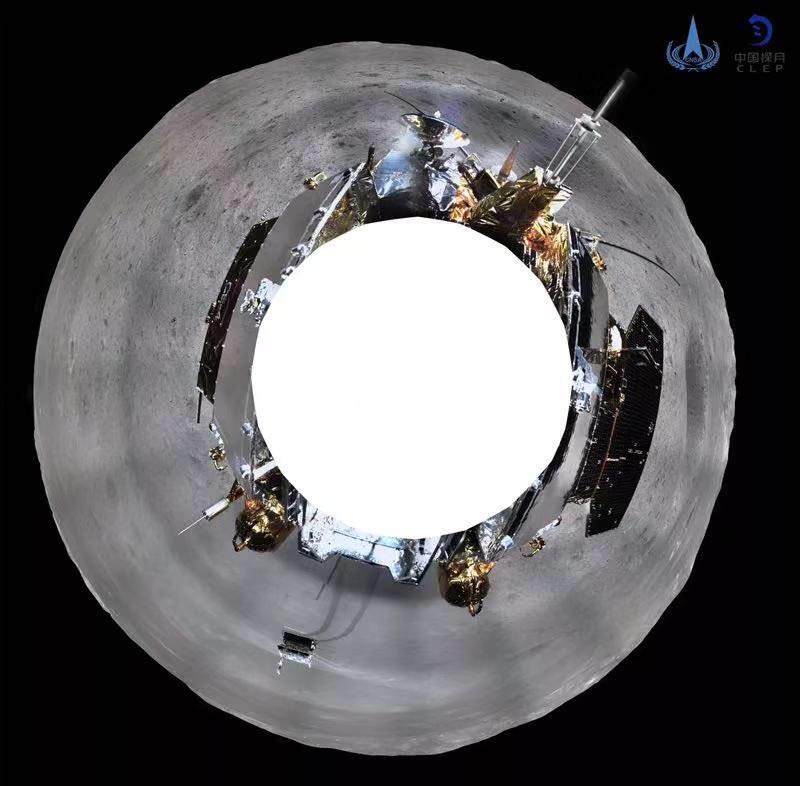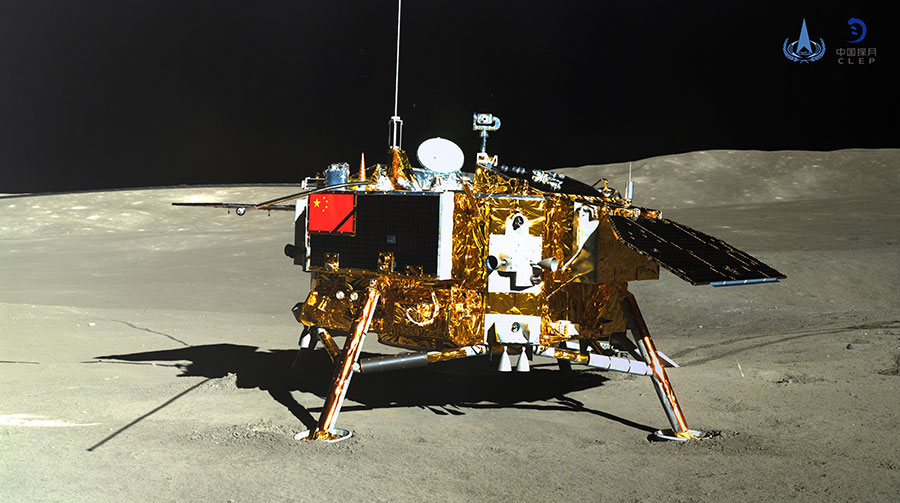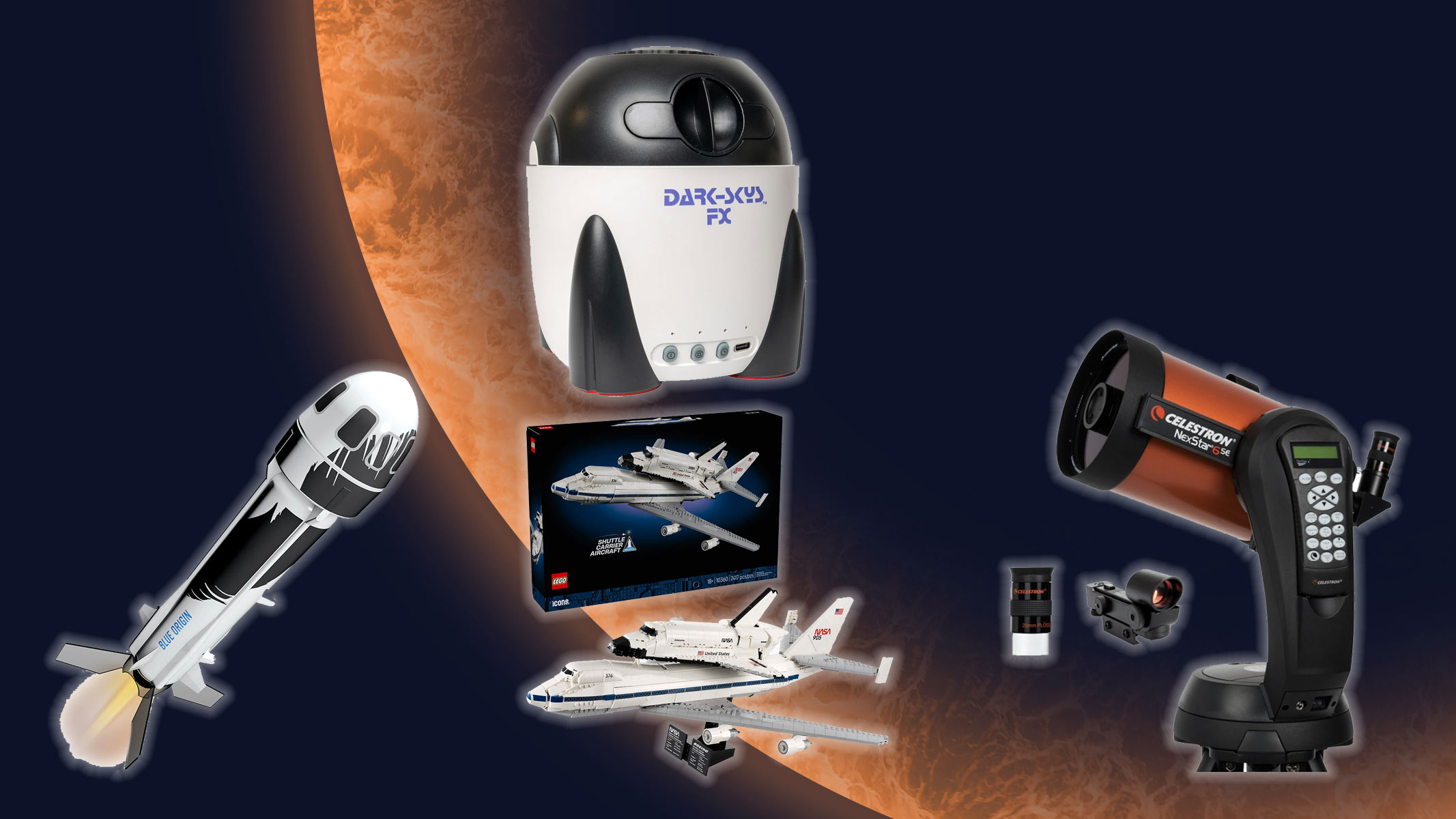See the Far Side of the Moon in This Amazing Panorama from China's Chang'e 4 Lander

China made history earlier this month with the first successful soft landing on the far side of the moon — and now, the mission has sent back an incredible panorama view of its work site.
The mission consists of two robots: the Chang'e 4 lander and the Yutu 2 rover. Since their arrival on Jan. 2, both have been exploring the lunar surface inside Von Kármán Crater, a 115-mile-wide (186 kilometers) feature. (You can see a high-resolution image of Chang'e 4's moon panorama here, via the China National Space Agency.)
Because the panorama was captured by the Chang'e 4 lander, it shows on the left the Yutu 2 rover, complete with the tire tracks left behind by the adventuring robot. Yutu 2 has a little more freedom to explore, but although it was deployed on Jan. 3, it soon settled down for a nap to avoid overheating during the long lunar day. According to the Chinese Academy of Sciences, temperatures reached 212 degrees Fahrenheit (100 degrees Celsius). [Photos from the Moon's Far Side! China's Chang'e 4 Lunar Landing in Pictures]
The moon's surface experiences days and nights that each last about 14 Earth days, and the mission landed just after sunrise at Von Kármán Crater. Chinese media reported yesterday (Jan. 10) that Yutu 2 successfully woke up from that nap — a feat its predecessor, the Yutu rover, had failed to accomplish in 2013. Expect those tracks from the rover's tires to lengthen in future photographs.
The panorama also shows the edges of some of the science instruments onboard the Chang'e 4 lander itself. According to the China National Space Administration (CNSA), several of those instruments, which are collaborations between China and other governments, have already been turned on. They are starting to gather observations on the lunar far side and should send science data back within the next few weeks, according to CNSA.
Information cannot be sent directly from the lunar far side to Earth — the moon's bulk gets in the way. Instead, signals are sent from the lunar surface up to a relay satellite called Queqiao, which launched in May 2018 and is hovering in an orbital "parking spot" from which it can communicate with Earth.
In addition to the panorama view, each robot has sent back an image of its compatriot on the surface. We may also get a bird's-eye view of the mission. That would come courtesy of NASA's Lunar Reconnaissance Orbiter, which is due to fly over the site on Jan. 31.
Breaking space news, the latest updates on rocket launches, skywatching events and more!
Email Meghan Bartels at mbartels@space.com or follow her @meghanbartels. Follow us @Spacedotcom and Facebook. Original article on Space.com.

Meghan is a senior writer at Space.com and has more than five years' experience as a science journalist based in New York City. She joined Space.com in July 2018, with previous writing published in outlets including Newsweek and Audubon. Meghan earned an MA in science journalism from New York University and a BA in classics from Georgetown University, and in her free time she enjoys reading and visiting museums. Follow her on Twitter at @meghanbartels.



